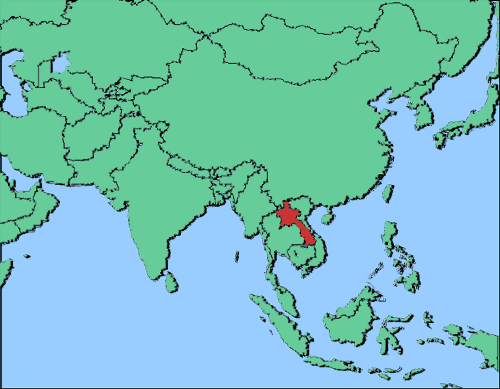
Circle the area on this map

A. Laos banana exports have jumped ten-fold to become the country's largest export earner. Nearly all of the fruit is sent north to China. While Chinese banana plantations have dramatically enriched the rural population, the heavy use of pesticides and fungicides have been blamed for workers’ ills and polluting water supplies.
D. With a population of 760,000, Vientiane also is the largest city in Laos. Bangkok is the capital of Laos’ eastern neighbor Thailand; Hanoi is the capital of western neighbor Vietnam; and Phnom Penh is the capital of of southern neighbor Cambodia.
C. The Silk Road was an ancient network of trade routes stretching from China and Japan to the Mediterranean Sea. But instead of the camels and caravans that transported spices and silk hundreds of years ago, China is planning a $1.4 trillion network of modern trading routes in a project that could challenge the U.S.-led world order.
B. The United States gave $13 billion ($130 billion in current dollars) in economic support to help rebuild Western European economies after the end World War II. The program was credited with stopping the spread of Soviet influence in postwar Europe. Some observers believe there also is a political motive in the Chinese initiative.